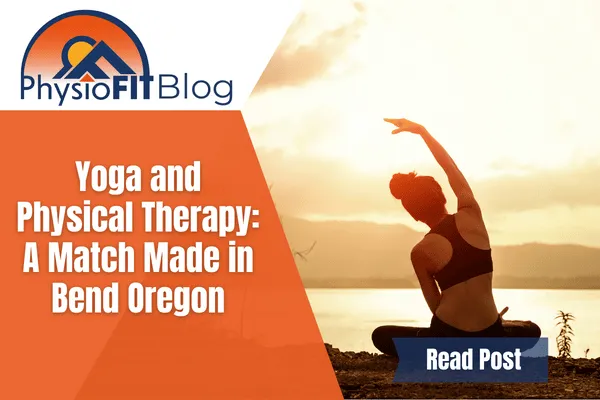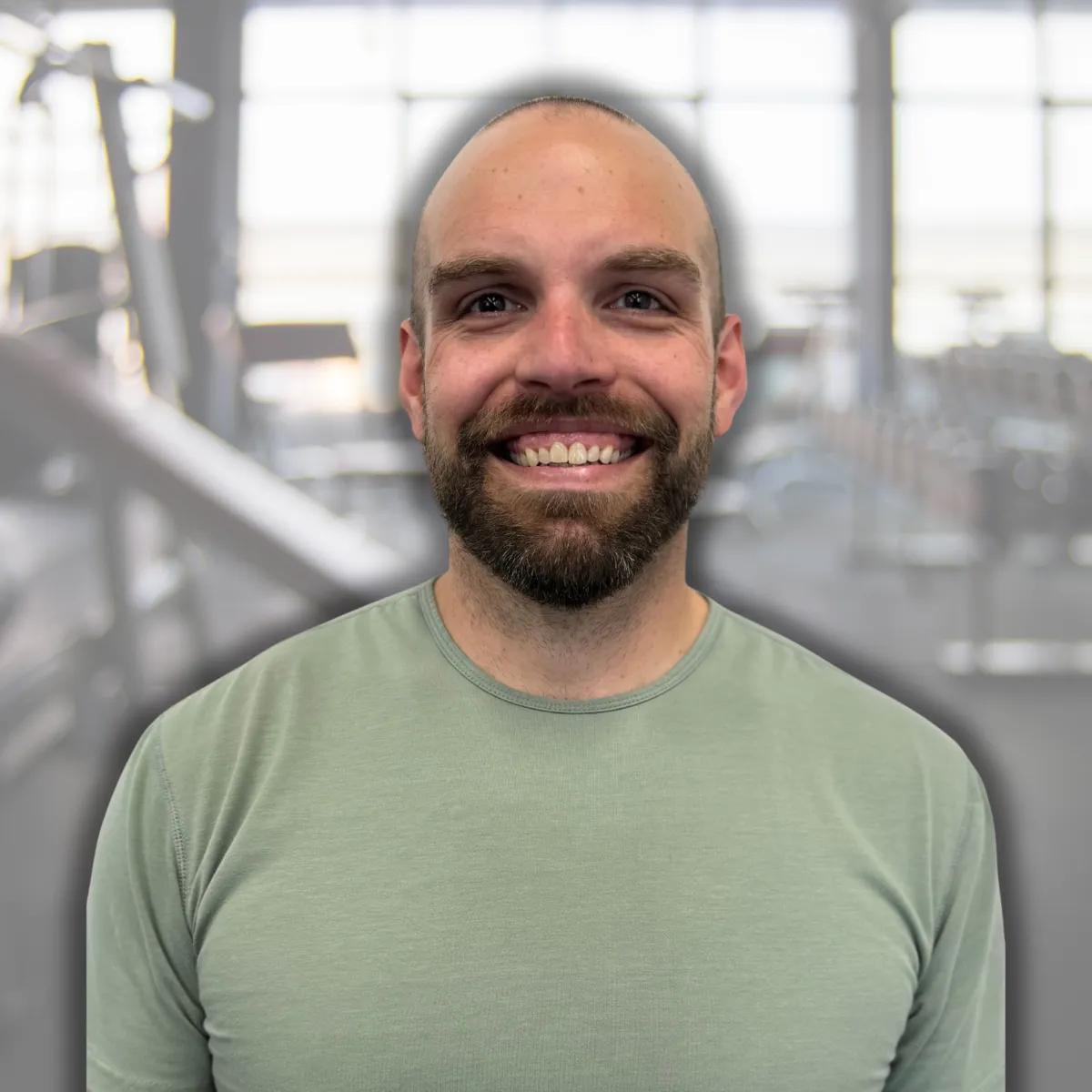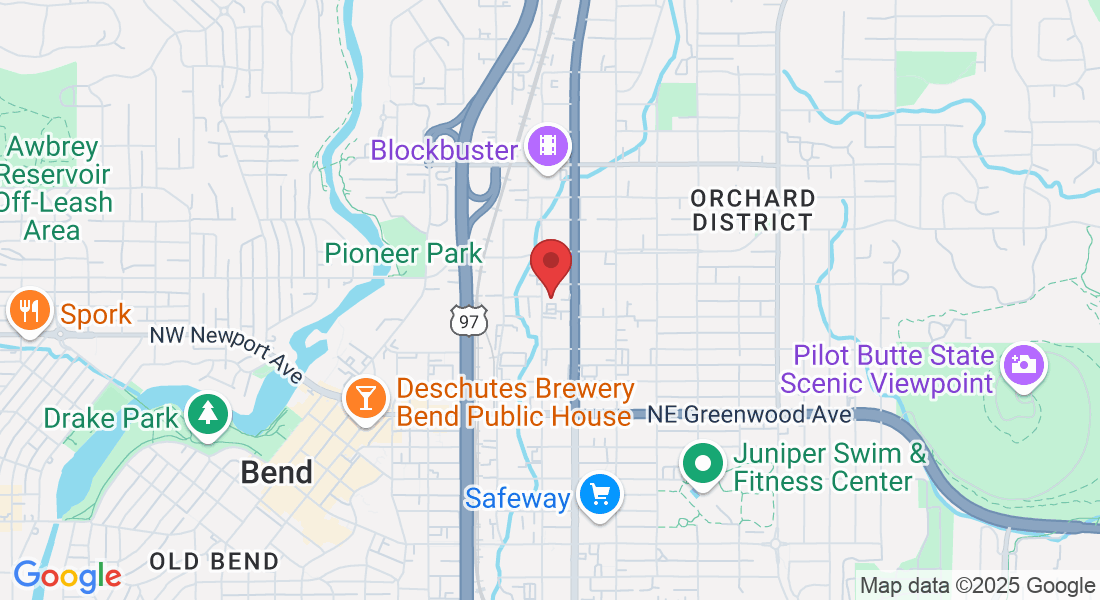Your Source for All Things Physical Therapy in Bend Oregon
The PhysioBLOG
Here, we share informative articles and insights that aim to help you achieve your full potential through our fitness-focused approach to rehabilitation. Our team is dedicated to providing you with valuable tips and techniques that can help you overcome any obstacle, whether you're recovering from an injury, surgery, or striving to build strength and wellness for life.
Stay up-to-date with our latest posts & empower yourself with elegantly simple techniques for optimal health & wellness.

Yoga and Physical Therapy: A Match Made in Bend Oregon
Please Note: The information provided on our website is intended for general education and is not a substitute for professional medical advice. Each individual's situation and body are different. Therefore, what may work for one person may not work for another. We care about your well-being and advise you to reach out to us to discuss your specific needs before implementing any advice from our website. If you’d like to explore this more or would like to schedule a time with a physical therapist in Bend Oregon, contact us at PhysioFITBend.com
Overview of Yoga and Physical Therapy
Yoga and physical therapy, when combined, present a holistic pathway to overall health and rejuvenation. While yoga delves into mindfulness, enhancing body awareness and mental well-being, physical therapy zeroes in on specific musculoskeletal challenges, ensuring functional restoration.
This dual approach is tailored to individual needs, ensuring a comprehensive healing journey that addresses both physical ailments and emotional well-being. The emphasis is on long-term health: yoga instills practices like postural alignment and breath work, while physical therapy offers expert guidance on safe movement.
Together, they pave the way for a life enriched with optimal health, reduced injury risks, and a harmonious balance between mind and body. Dive deep into this integrated approach and discover a transformative path to wellness.
Benefits of Yoga in Healing
Yoga is known for its significant role in the healing process. Its benefits in promoting healing are immense and have been acknowledged by both yoga practitioners and physical therapists. Here are five key points that outline the positive impact of yoga in the healing journey:
Stress reduction: By incorporating breathing exercises, meditation, and gentle movements, yoga helps counter the negative effects of stress on the body. It promotes relaxation, which in turn supports the body's natural healing mechanisms.
Increased flexibility and mobility: Yoga involves a variety of poses and stretches that gradually increase flexibility and improve joint range of motion. This enhanced mobility aids in the healing of injuries and reduces muscle tension.
Improved strength and balance: Regular practice of yoga builds strength and improves balance, which are crucial for injury prevention and rehabilitation. Strengthening the body's core muscles and promoting better balance can contribute to a more effective healing process.
Pain management: Many individuals experience relief from chronic pain through regular yoga practice. The combination of physical movements, mindfulness, and breathing techniques helps manage pain and promotes a sense of well-being.
Enhanced mental well-being: Yoga not only benefits the physical aspect of healing but also has a positive impact on mental health. It improves focus, reduces anxiety, and enhances overall emotional well-being, all of which play a vital role in the healing process.
Furthermore, incorporating yoga into physical therapy treatments has shown remarkable results in speeding up the recovery process. It is important to note that the therapeutic effects of yoga vary for each individual, and it is essential to consult a qualified healthcare professional for personalized guidance.
Understanding Yoga as a Holistic Practice
Yoga is an integrative practice that encompasses physical, mental, and spiritual well-being. It goes beyond the physical exercise aspect commonly associated with it. By delving into the depths of its philosophy and incorporating breathwork, mindfulness, and meditation, yoga offers a holistic approach to wellness. Through this practice, individuals can cultivate self-awareness, balance, and harmony in their lives.
Moreover, yoga serves as a powerful tool in combination with physical therapy. The marriage of these two disciplines, as seen in Bend, Oregon, allows for a comprehensive approach to healing and rehabilitation. While physical therapy focuses on the body's functional aspects, yoga complements it by nurturing mental and emotional well-being. This integration addresses the individual as a complete entity rather than merely targeting specific symptoms or ailments.
An essential aspect of understanding yoga as a holistic practice lies in recognizing that it caters to the individual's unique needs. It adapts to different bodies, circumstances, and goals. Whether one seeks physical strength, flexibility, stress reduction, or inner exploration, yoga provides a versatile platform for growth and self-discovery. Its versatility is further evident in its ability to be customized for people of all ages, abilities, and fitness levels.
To truly benefit from yoga's holistic approach, it is crucial to explore and engage in this ancient practice. By incorporating yoga into daily life, individuals can experience transformative benefits in physical strength, mental clarity, emotional balance, and overall well-being. Don't miss out on the potential for growth, healing, and self-awareness that yoga has to offer. Embrace the integration of yoga and physical therapy for a truly wholesome and fulfilling journey towards holistic wellness.
The Importance of Postural Alignment in Yoga and Physical Therapy
Postural alignment is crucial in both yoga and physical therapy as it plays a significant role in promoting overall well-being and preventing injuries. Here are five key points highlighting the importance of postural alignment:
Enhanced body awareness: Proper alignment helps individuals develop a deeper understanding of their bodies and movement patterns.
Improved posture: Correct alignment during yoga and physical therapy exercises can lead to improved posture, reducing the risk of musculoskeletal issues.
Optimal muscle activation: Aligning the body correctly ensures that the appropriate muscles are engaged, maximizing the benefits of each movement.
Injury prevention: Maintaining proper alignment minimizes stress on joints and ligaments, reducing the likelihood of sustaining injuries.
Effective therapeutic outcomes: In physical therapy, focusing on postural alignment improves the effectiveness of treatment plans, aiding in the recovery process.
Furthermore, understanding the relationship between postural alignment and breath control can help individuals experience a deeper mind-body connection, enhancing their overall yoga and physical therapy experience. By prioritizing postural alignment, individuals can reap the full benefits of these practices, increasing strength, flexibility, and overall well-being.
Breathwork Techniques in Yoga for Healing
Breathwork techniques in yoga for healing focus on harnessing the power of the breath to promote physical and emotional well-being. By utilizing specific breathing patterns and exercises, practitioners can enhance their mind-body connection and stimulate the body's natural healing processes.
Here's a concise guide to breathwork in yoga for healing:
Deep Belly Breathing: Sit comfortably, breathe deeply into your belly, then exhale slowly. Focus on the breath's sensation.
Alternate Nostril Breathing: Using your right hand, alternate closing each nostril while breathing, emphasizing balanced breathing.
Ujjayi Breathing: Inhale deeply, then exhale with a slight throat constriction, producing a "ha" sound. Match inhalation and exhalation lengths.
Three-Part Breath: Breathe sequentially into your belly, ribcage, and chest, then exhale in reverse order.
Breath Retention: After inhaling, hold your breath briefly, then exhale.
Incorporate these techniques for relaxation, stress reduction, and enhanced well-being. Explore and find what suits your healing journey best.
It is worth mentioning that breathwork techniques in yoga for healing can vary depending on individual needs and preferences. Exploring different techniques and finding what resonates with you can be an essential part of your healing journey.
Using Asanas for Range of Motion and Functional Movement
Yoga poses, known as asanas, can be highly beneficial for improving range of motion and promoting functional movement. By incorporating these poses into your exercise routine, you can effectively increase flexibility, improve joint mobility, and enhance overall physical performance.
Here is a step-by-step guide on how to incorporate asanas for range of motion and functional movement:
Choose a variety of asanas: Select a range of yoga poses that target different muscle groups and joints. This will help ensure that you are working on improving flexibility and mobility throughout your entire body.
Warm-up: Before starting your yoga practice, it is important to warm up your body. This can include gentle stretches, such as neck rotations, shoulder rolls, and hip circles, to loosen up tight muscles and prepare them for deeper stretches during the asanas.
Focus on proper alignment: When performing asanas, pay attention to maintaining proper alignment. This will help prevent injuries and allow for greater effectiveness in improving range of motion and functional movement. Listen to your body and avoid pushing yourself too far beyond your limits.
Gradually increase intensity: As you become more comfortable with the asanas, gradually increase the intensity by holding the poses for longer durations or challenging yourself with more advanced variations. This progressive approach will help you steadily improve your range of motion and functional movement abilities.
Breath awareness: Throughout the practice, maintain a deep and relaxed breathing pattern. This will not only help you stay grounded and centered but also facilitate the smooth flow of energy and enhance the effectiveness of the asanas.
Cool down and stretch: After completing your asana practice, take a few minutes to cool down and stretch. This will help prevent muscle soreness and promote faster recovery. Focus on stretches that target the muscles you worked during the asanas, holding each stretch for 20-30 seconds.
Incorporating asanas for range of motion and functional movement brings a unique opportunity to address the specific needs of your body. By practicing these poses regularly, you can develop greater flexibility, improve joint mobility, and enhance overall body functionality.
Neurological Rewiring through Yoga and Physical Therapy
Neurological Rewiring, achieved through the holistic practice of yoga and the specialized techniques of physical therapy, is a transformative approach that combines mind-body connection and targeted exercises to restructure neural pathways.
By incorporating specific movements, breathing techniques, and mindfulness practices, the combination of yoga and physical therapy fosters neural adaptation and rewiring, empowering individuals to regain control, improve motor skills, and enhance overall well-being. This synergistic approach underscores the importance of personalized treatment plans that address the unique needs and goals of each individual, amplifying the benefits of both yoga and physical therapy. It offers a promising avenue for those seeking to optimize their neurological function and improve their quality of life.
Combining Yoga and Physical Therapy for a Holistic Healing Approach
In this unique approach to healing, the combination of yoga and physical therapy creates a holistic and comprehensive treatment plan. By integrating the benefits of both practices, patients can experience improved physical strength, flexibility, and overall well-being.
Through the incorporation of yoga postures, breathing exercises, and mindfulness techniques, individuals can unlock their body's potential for healing and self-discovery. Physical therapy complements this approach by focusing on specific rehabilitative exercises and techniques to address injuries, pain, and movement limitations.
By combining these two disciplines, patients can benefit from a synergistic effect that enhances their healing process. For example, yoga enhances the mind-body connection, promoting relaxation and reducing stress, which can positively impact the outcome of physical therapy sessions.
Additionally, physical therapy can help individuals recover from injuries or surgeries, allowing them to safely participate in yoga classes and maximize the benefits of their practice. The integration of both yoga and physical therapy facilitates a more well-rounded and personalized healing approach that addresses the unique needs and goals of each individual.
To optimize the effectiveness of this holistic healing approach, it is important to ensure that both the yoga instructor and physical therapist are knowledgeable and experienced in collaborating on treatment plans. Communication between the two professionals is crucial to tailor the interventions to the patient's specific condition and progress.
Conclusion
While yoga and physical therapy may seem like separate practices, they can actually complement each other beautifully. By combining the mindfulness and relaxation techniques of yoga with the evidence-based treatments of physical therapy, individuals in Bend, Oregon can experience a truly holistic approach to healing and well-being. This unique collaboration allows for a comprehensive treatment plan that targets the mind, body, and spirit.
One key benefit of integrating yoga and physical therapy is the emphasis on individualized care. Both practices recognize that everyone's body is different and requires personalized attention. In physical therapy, this means tailoring exercises and treatments to address specific injuries or conditions. In yoga, it means adapting poses and sequences to meet individual needs and abilities. By combining these two approaches, individuals receive highly personalized care that optimizes their healing process.
Another advantage of combining yoga and physical therapy is the focus on whole-body wellness. While physical therapy typically targets specific injuries or conditions, yoga takes a holistic approach by addressing the body as a whole. Through breathwork, mindfulness, and physical movement, yoga helps individuals foster a deeper connection with their bodies and promote overall well-being. By incorporating yoga into physical therapy sessions, individuals can experience enhanced physical, mental, and emotional benefits.
Incorporating both yoga and physical therapy into a treatment plan can lead to improved outcomes and long-term success. According to a study published in the Journal of Physical Therapy Science, individuals who participated in a combined yoga and physical therapy program experienced greater improvements in pain management, functional ability, and quality of life compared to those who received only physical therapy. This research highlights the potential synergies between these two practices and the benefits they can provide when utilized together.
Five Facts
✅ Yoga and physical therapy combined provide a more holistic approach to healing and recovery.
✅ Yoga has been proven to improve strength, flexibility, cardiovascular function, sleep patterns, and mood.
✅ Physical therapy focuses on postural alignment, optimal positions, and muscle recruitment to prevent injury and improve functional movement.
✅ Breathwork techniques in yoga help nourish the body and avoid compensations with accessory breathing muscles.
✅ Combining yoga and physical therapy rewires the neurological response, allowing the body to move with less or no pain.
FAQ
Question 1: Can yoga and physical therapy improve my overall health and wellness?
Answer: Yes, several clinical studies have shown that yoga can improve various aspects of health and wellness, including strength, flexibility, cardiovascular function, sleep patterns, mood, immune function, and quality of life. When combined with physical therapy, yoga provides a holistic approach to healing and promotes better overall well-being.
Question 2: How does yoga help in reducing pain and fatigue during the recovery process?
Answer: Yoga has been proven to decrease pain, fatigue, anxiety, depression, frustration, impatience, and fear avoidance. By practicing mindfulness, breathwork, and proper postural alignment through yoga, the body learns to move past fear avoidance and experience motion with less or no pain. This helps in rewiring the neurological response and reducing pain during the recovery process.
Question 3: Can yoga and physical therapy help in improving cardiovascular and digestive function?
Answer: Yes, yoga has been shown to improve heart rate variability and cardiovascular function. It also helps in improving digestive function by promoting relaxation and reducing stress, which are known to affect digestion. When combined with physical therapy, yoga can provide a comprehensive approach to enhancing cardiovascular and digestive health.
Question 4: What is myofascial release and how does it relate to yoga and physical therapy?
Answer: Myofascial release refers to the release of restrictions in the fascial lines and planes in the body, which are the connections of muscles, tendons, ligaments, and fascia. Yoga, with its emphasis on gentle stretching and movement, can help lengthen restricted fascial lines and promote myofascial release. Combining yoga with physical therapy allows for better functional movement and improved overall musculoskeletal health.
Question 5: Can modified yoga postures be used in the recovery process?
Answer: Yes, when practicing yoga and physical therapy, modifications and props are used as necessary to meet individuals at their current abilities. This ensures that the postures are accessible and safe for each person. Modified yoga postures allow for progression in building range of motion, flexibility, strength, balance, coordination, and endurance while preventing strain or injury.
Question 6: Where can I find a yoga-trained physical therapist in Bend, Oregon?
Answer: If you're looking for a treatment approach that combines yoga and physical therapy in Bend, Oregon, you can schedule an appointment with our yoga-trained physical therapist today. Simply give us a call or complete the form provided below. Our team is dedicated to providing the best care to help you achieve your healing and wellness goals.
Please Note: It's important to note that any exercises or techniques that are shared should be performed under the guidance of a qualified bend physical therapy expert to ensure correct technique and to prevent injuries. A physical therapist can provide a customized exercise program based on the individual's fitness level, goals, and any existing injuries or conditions. If you’d like to explore this more or would like to schedule a time with a physical therapist in Bend Oregon, contact us at PhysioFITBend.com
Ask The Experts

PT, MSPT, OCS, CF-L1

PT, DPT, TPI, CF-L1

PT, DPT, CSCS
Copyright PhysioFIT 2025 . All Rights Reserved


